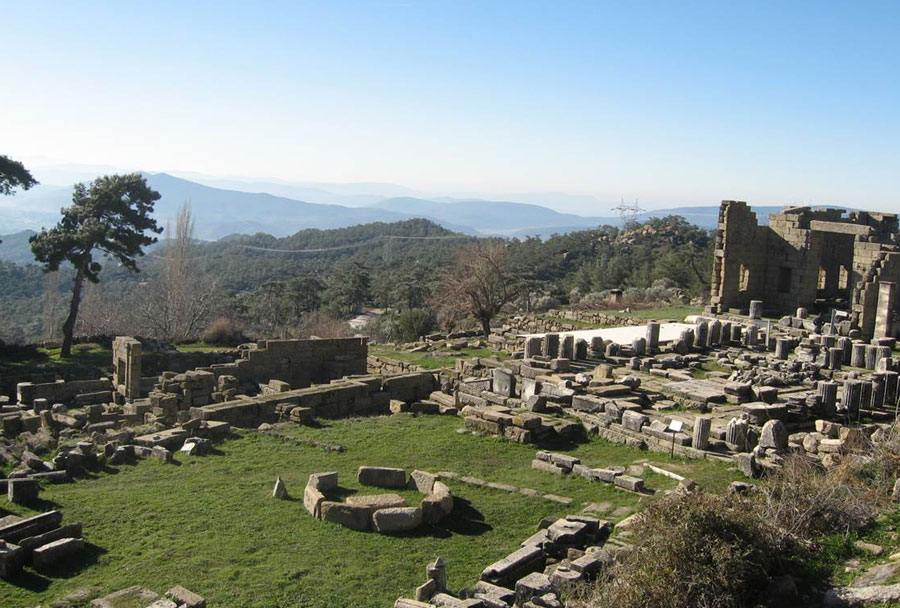Located 14 km from Kocayayla north of Milas, Labranda is the cross of the Carians and one of the ancient cities established as a sacred area above the mountains.
The earliest information about Labraunda is learned from Herodotus, the famous historian of antiquity. For the Carians who lived in the southwest of Anatolia, Labraunda is a very important cult center.
The origin of the cult of Zeus Labraundos is thought to be based on a large rock just above the water source and the temple terrace. It is reached by a 14 km long and 8 m wide stone paved road which starts from Mylasa (Milas) and is called the “Sacred Way”. The oldest finds in the sacred area of Zeus Labraundos belong to the 5th century BC.
Caria Satrapi Moussollos (377-354 BC) and his brother Idrieus (351-344 BC), who lived in the 4th century BC the city’s brightest period; They made Labraunda a family sanctuary.
In the sanctuary, they celebrate the celebration of religious holidays every year for 5 days. During the celebrations in 355 BC, Moussollos, who escaped from an assassination, started a major zoning activity in the city and built a series of monumental buildings, including the Temple of Zeus.
In the Hellenistic period only one fountain structure was built in the sacred area. In the 1st-1-2 centuries, the North Stoa was rebuilt, 2 bath structures and a few buildings were added.
In the 4th century AD, local people accepted Christianity. Later, a Byzantine Church was built near the East Propylon. In the 4th century AD, it was no longer a sacred area due to a large fire disaster. The ruins of the 8 meter wide sacred road extending to Milas today can be preserved in a few places.
The excavations at Labraunda were initiated in 1948 by A W PERSSON, professor at Uppsala University, Sweden. Professor from the same university Pontus HELLSTRÖM was continued under the direction of excavation. From then on, excavations continue during the period. In 2014, he was chaired by Dr. Oliver Can HENRY excavation from the Institute of Anatolian Studies in France.

